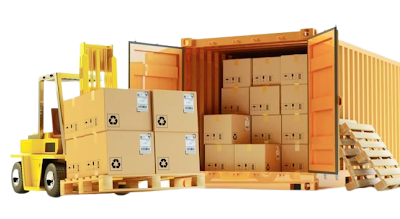Protective packaging plays a crucial role in logistics as it
helps protect products during transportation and storage. In this blog post, we
will discuss what protective packaging is, why it is important, and some of the
common types of protective packaging used in logistics.
What is Protective Packaging?
Protective packaging is a type of packaging that is
specifically designed to protect products during transportation and storage. It
is made from materials that provide high resistance to damage from external
forces such as shock, vibration, and compression. To guarantee that goods reach
at their destination in the same condition they were in while shipping,
protective packaging is necessary.
Why is Protective Packaging Important?
Protective packaging is essential for several reasons.
Firstly, it helps prevent damage to products during transportation and storage.
When products are shipped, they are often subjected to a wide range of external
forces such as shock, vibration, and compression. Protective packaging helps to
absorb these forces and prevent damage to the product.
Secondly, protective packaging helps to reduce the risk of
product contamination. Products that are not properly protected during
transportation and storage can be exposed to a variety of contaminants, such as
dust, dirt, and moisture. Protective packaging helps to create a barrier
between the product and these contaminants, reducing the risk of contamination.
Lastly, protective packaging can help to reduce costs associated
with product damage. When products are damaged during transportation and
storage, it can result in additional costs, such as replacement costs and
customer dissatisfaction. Protective packaging helps to prevent damage and
reduce these costs.
Types of Protective Packaging
There are several types of protective packaging that are
commonly used in logistics. Some of the most common types include:
·
Bubble
wrap: Bubble wrap is a type of protective packaging that is made from
plastic sheets with air bubbles trapped between them. It provides cushioning
and shock absorption to protect products from damage during transportation.
·
Foam
packaging: Foam packaging is a type of protective packaging that is made
from expanded polystyrene foam. It is lightweight and provides excellent shock
absorption to protect products from damage.
·
Pallets:
Pallets are a type of protective packaging that is used to transport goods in
bulk. They provide a stable base for products and protect them from damage
during transportation.
·
Corrugated
boxes: Corrugated boxes are a type of protective packaging that is made
from several layers of cardboard. They provide high protection against shock,
vibration, and compression and are commonly used to transport fragile items.
·
Dunnage
bags: Dunnage
bags are a type of protective packaging that is used to fill gaps between
products during transportation. They help to prevent products from shifting and
becoming damaged during transportation.
Conclusion
Protective packaging is an essential part of logistics. It
helps to protect products during transportation and storage, reduce the risk of
product contamination, and reduce costs associated with product damage. Several
types of protective packaging are commonly used in logistics, including bubble
wrap, foam packaging, pallets, corrugated boxes, and dunnage bags. By using the
right protective
packaging, logistics companies can ensure that products arrive at their
destination in the same condition they were in when they were shipped.

Comments
Post a Comment